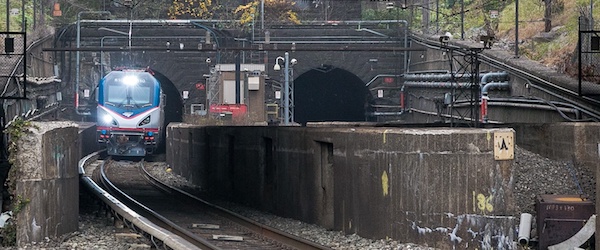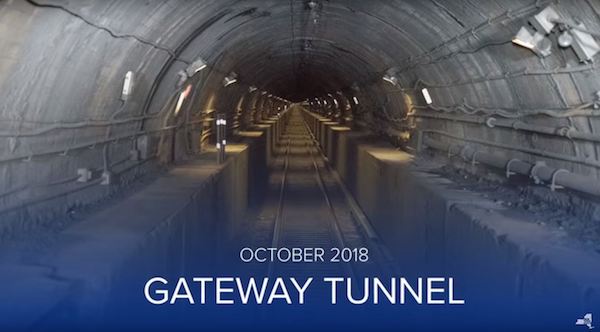NEW YORK(TIP): The Gateway Program, one of the most urgent infrastructure programs in the country, is a comprehensive rail investment programthat would improve current services, add resiliency and create new capacity for a critical section of the Northeast Corridor (NEC) – the most heavily used passenger rail line in the country. The Gateway Program Development Corporation (GDC), a New Jersey not-for-profit entity, was established to oversee and deliver the Gateway Program, with support from federal and local partner agencies.
The NEC is the most heavily used passenger rail line in the U.S., with more than 2,000 trains per day carrying approximately 800,000 daily riders across eight states and Washington D.C. It serves a region that is home to 17 percent of the U.S. population and 97 Fortune 500 company headquarters, and an area that contributes 20 percent of the national GDP. The NEC is a vital artery in the region and a critical element of the national transportation network, linking millions of people to good jobs, and connecting this region with the rest of the country.

The Gateway Program would maintain resiliency and increase capacity along a 10-mile stretch of the NEC between Newark, New Jersey and Pennsylvania Station in New York City (PSNY), a section of the NEC that handles approximately 450 trains per day and over 200,000 daily Amtrak and NJ TRANSIT passengers, and directly serves PSNY – the busiest rail station in America. This segment of the NEC includes the North River Tunnel under the Hudson River, which has deteriorated due to age, intensive use, and damage sustained from saltwater exposure during Superstorm Sandy in 2012.
The Gateway Program’s Phase 1 is currently underway and includes two projects: the Portal North Bridge Project and the Hudson Tunnel Project. Each is vital to the functioning of the NEC and addresses single points of failure that can have catastrophic impacts to the region’s economy and environment.
The Portal North Bridge Project
The Portal North Bridge Project will replace the current, functionally obsolete Portal Bridge – a century-old two-track, railroad swing bridge spanning the Hackensack River between Secaucus and Kearny, New Jersey – with a new, high-level, two-track fixed span. The new bridge will increase rail transit capacity by an estimated 11%, and significantly improve service reliability by replacing the movable span, which interrupts operations and is prone to mechanical failures, and is the current cause of frequent delays. The Project is fully designed and permitted. Early construction work began in Fall 2017.
On June 29, 2018, an updated financial plan reflecting changes to the local funding structure for the Portal North Bridge project was submitted to the Federal Transit Administration (FTA). The updated plan was submitted by NJ TRANSIT, the Project Sponsor, on behalf of GDC and the project partners. It includes New Jersey’s investment of up to $600 million funded through state-appropriation backed bonds, capital funding from the NJ Transportation Trust Fund and other existing local sources.
The Hudson Tunnel Project is currently in the environmental review process, and includes two components:t he construction of a new two-track Hudson River rail tunnel from New Jersey to Manhattan that will directly serve PSNY; and the rehabilitation of the 108-year old, existing North River Tunnel, which incurred serious damage during Superstorm Sandy in 2012.
The Hudson Tunnel Project would complete and make use of the concrete casing on the West Side of Manhattan that is preserving right-of-way for the future tunnel to PSNY (“Hudson Yards Concrete Casing” or “Hudson Yards Box”).
The North River Tunnel is a critical link in the region’s trans-Hudson commuting system, and the Hudson River Tunnel Project is urgently needed. A closure of just one tube could reduce capacity by as much as 75%, and force tens of thousands of commuters and travelers into other modes of travel, pushing them on to already congested bridges, tunnels and streets in both states. The resulting congestion would lead to massive degradation of air quality throughout the region, with the movement of people and goods to and from the nation’s largest regional economy becoming severely constrained.
When complete, the Project would allow for the rehabilitation of the North River Tunnel without disrupting existing levels of train service and provide redundant capability and increased operational flexibility for Amtrak and NJ TRANSIT.
On June 29, 2018 a status update demonstrating continued progress on the Hudson Tunnel Project was provided to the Federal Transit Administration by the Port Authority of New York and New Jersey and the Gateway partners.
The update notes that in recognition of the FTA’s expressed view that GDC, as currently constituted, is not eligible to serve as CIG grant applicant or NEPA Sponsor for the Hudson Tunnel Project, the Port Authority of New York and New Jersey will serve those roles on behalf of the Partners. Because the Partners intend for GDC to serve a lead role in the financing and development of the Gateway Program, including acting as a federal grant and loan applicant as well as NEPA project sponsor, the States of New Jersey and New York have committed to pursue legislative action in both states that will enable GDC to perform these financing and development functions for the Gateway Program. GDC continues to direct, coordinate with and consult on all project-related activities of various partner organizations.
(Source: THE GATEWAY PROGRAM DEVELOPMENT CORPORATION)
